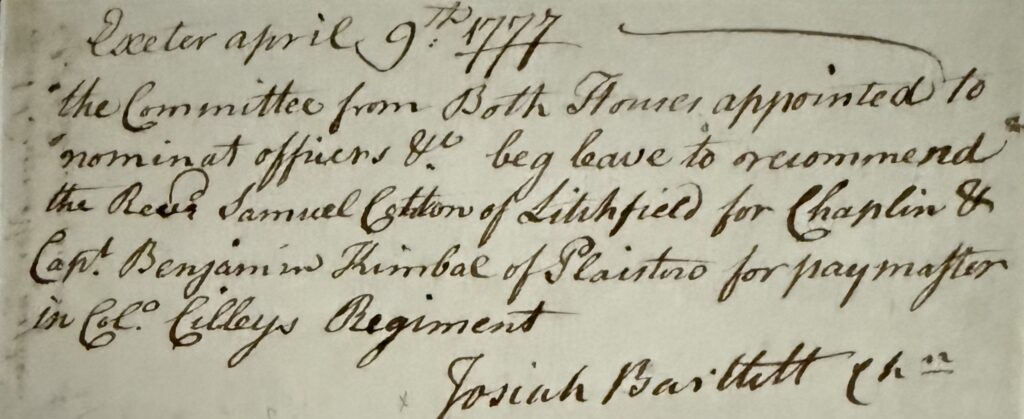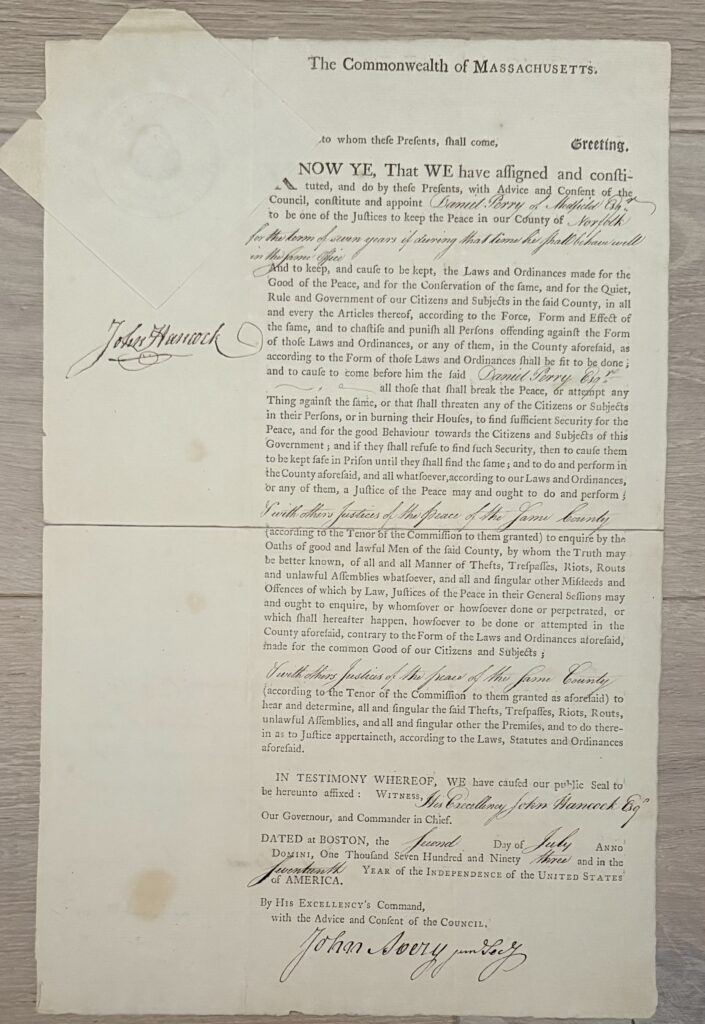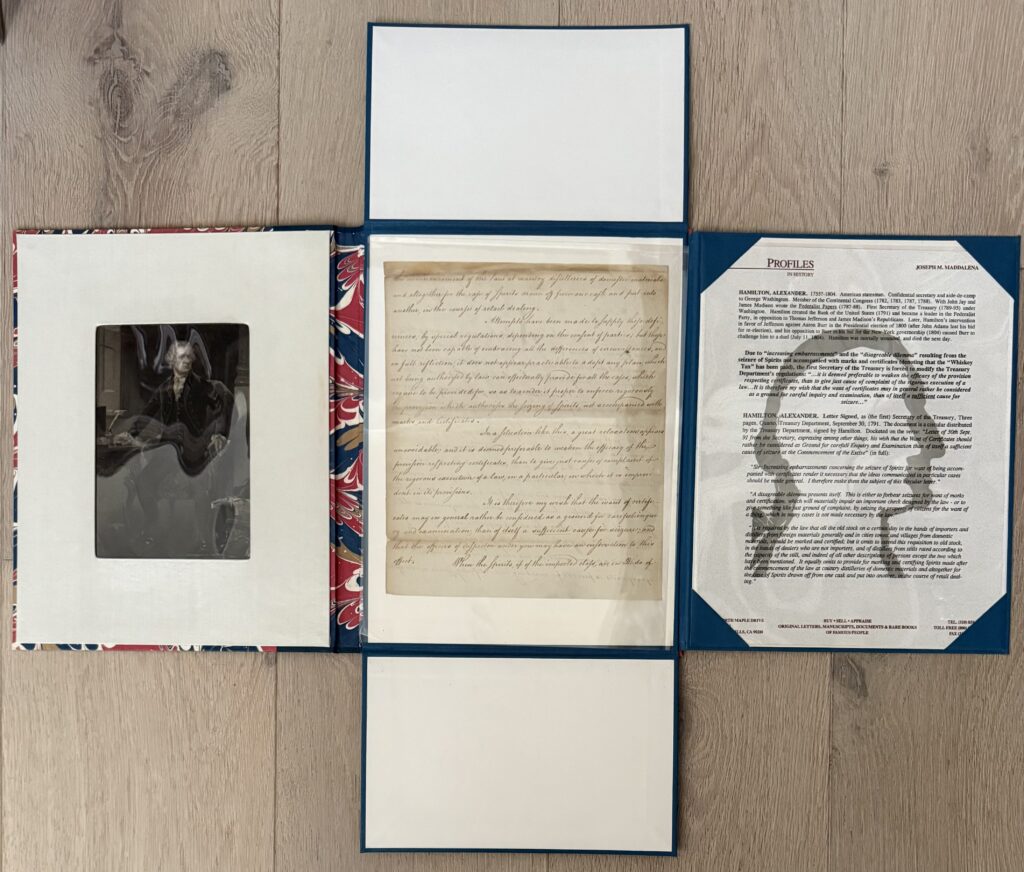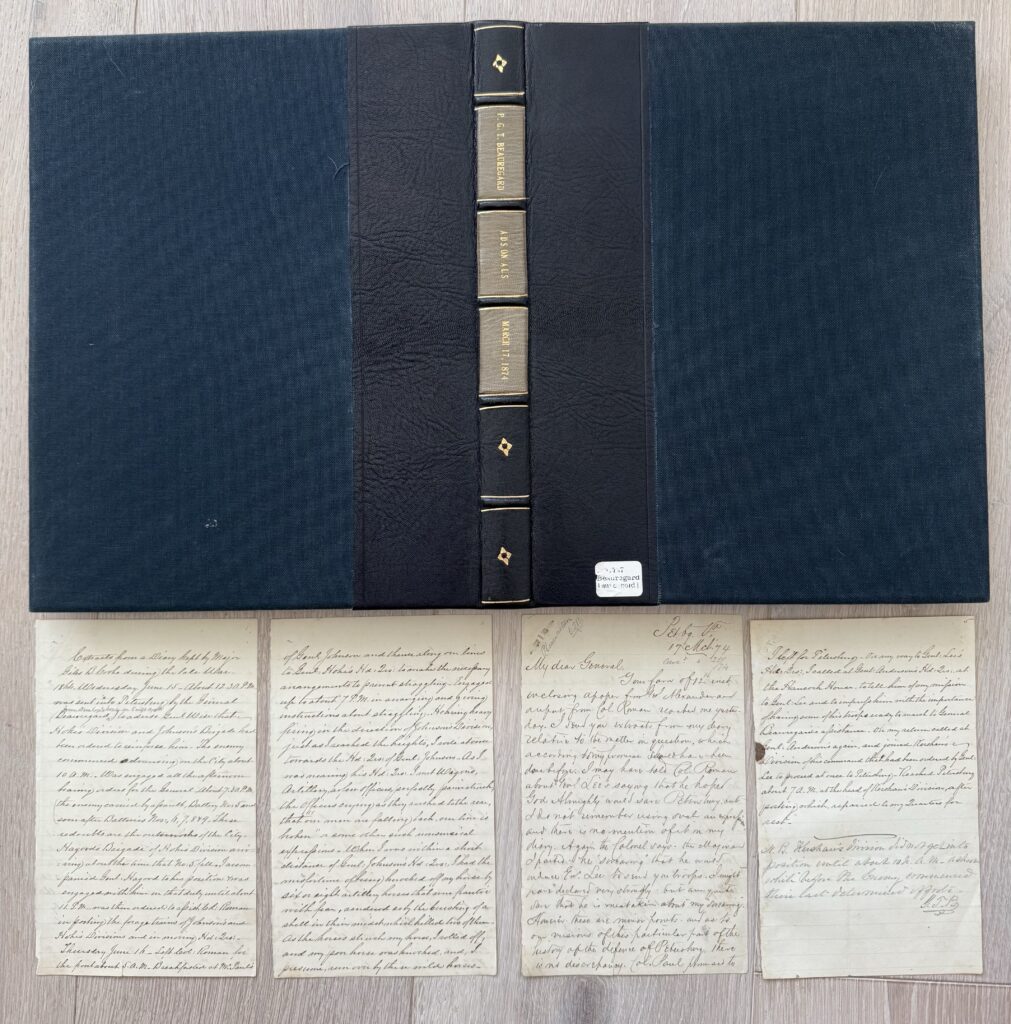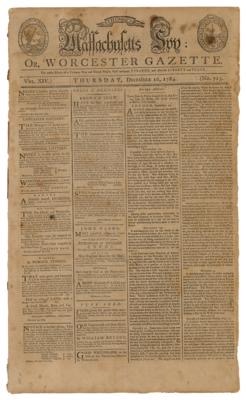SIGNER OF THE DECLARATION OF INDEPENDENCE, JOSIAH BARTLETT, APPOINTS TWO SOLDIERS TO FIGHT IN THE REVOLUTIONARY WAR
Physician and signer of the Declaration of Independence from New Hampshire (1729-1795) who served as that state’s governor from 1790 to 1794. ADS signed “Josiah Bartlett,Jr.” one page, 7.75 x 4, April 9, 1777. Nomination reads: “ The Committee of Both Houses appointed and nominat (sic) & beg leave to recommend Revd Samuel Cotten of Litchfield for Chaplin & Capt. Benjamin Kimbal of Plaisto for pay master in Col. Cilley’s Regiment.” Contained within a beautiful blue lether folding case. In fine condition.
“Cilley’s Regiment” most likely refers to the 1st New Hampshire Regiment of the Continental Army during the American Revolutionary War, which was commanded by Colonel Joseph Cilley. He became the regiment’s colonel in April 1777, succeeding General Enoch Poor.
Captain Benjamin Kimball was an officer in the New Hampshire Line of the Continental Army during the Revolutionary War. Kimball’s known military career began on May 25, 1775, when he was commissioned as a lieutenant in Captain Samuel Gilman’s company of Colonel Enoch Poor’s 2nd New Hampshire Regiment. The regiment began its service in New Hampshire, where it was stationed around Portsmouth Harbor. It marched to Boston in late June, soon after receiving the news of the Battle of Bunker Hill, and spent the rest of the campaign season in the area around Boston as part of the American siege of the city.
On January 1, 1776, as the Continental Army reorganized, Kimball reenlisted as a lieutenant in a new regiment led by Poor, the 8th Continental Regiment. Poor’s regiment served at the Siege of Boston until the British evacuated the city on March 17, then in April was ordered to march to Canada to reinforce the faltering American invasion there. After a brief stop at Fort Ticonderoga in mid-May, the regiment arrived in Canada just in time to join a messy and disease-ridden general retreat as the invasion collapsed in the face of fresh British reinforcements. Poor’s regiment arrived at Ticonderoga with the remnants of the invasion force the week of July 13-19 and would stay there until the end of their campaign season on November 16. While at Ticonderoga, the battalion joined the general effort to reinforce positions at Ticonderoga and across the lake at Mount Independence and to prepare for a possible British attack. While British forces approached Fort Ticonderoga on October 28, they chose to retreat rather than fight after seeing the state of the fort’s defenses. Also while at Ticonderoga, on September 6, Kimball was promoted to the rank of captain.
On November 8, 1776, as the Continental Army was preparing for another reorganization, Kimball was commissioned as a paymaster and captain of the new 1st New Hampshire Regiment. In the spring of 1777, he and his regiment returned to Fort Ticonderoga, which was facing a threat from another British army, this time under General John Burgoyne. The regiment arrived at the fort on May 21 and remained there until the American army evacuated the fort and retreated on July 6. Kimball and the regiment retreated through Vermont and New York and worked to slow the British advance, eventually defeating Burgoyne’s army at the Battles of Saratoga and forcing their surrender. After the success of the Saratoga Campaign, the 1st New Hampshire Regiment was assigned to the main Continental Army, where it fought in the 1778 Battle of Monmouth and was sent on the 1779 Sullivan Expedition. Kimball’s military service and life came to an abrupt end on August 23, 1779, when he was killed accidentally in Northumberland County, PA. Joseph Leigh, Commissary of Issues for the New Hampshire Line, recorded the circumstances of his death in a letter: “Poor man! He unfortunately lost his life by the accidental discharge of a Soldiers Musquet – I conceived him to have been a valuable member of society, and the publick, in my opinion, has lost a faithful Servant.” Outside the army, Kimball had been a resident of Plaistow, NH. He left behind a wife, Sarah Little Kimball, and seven children.
